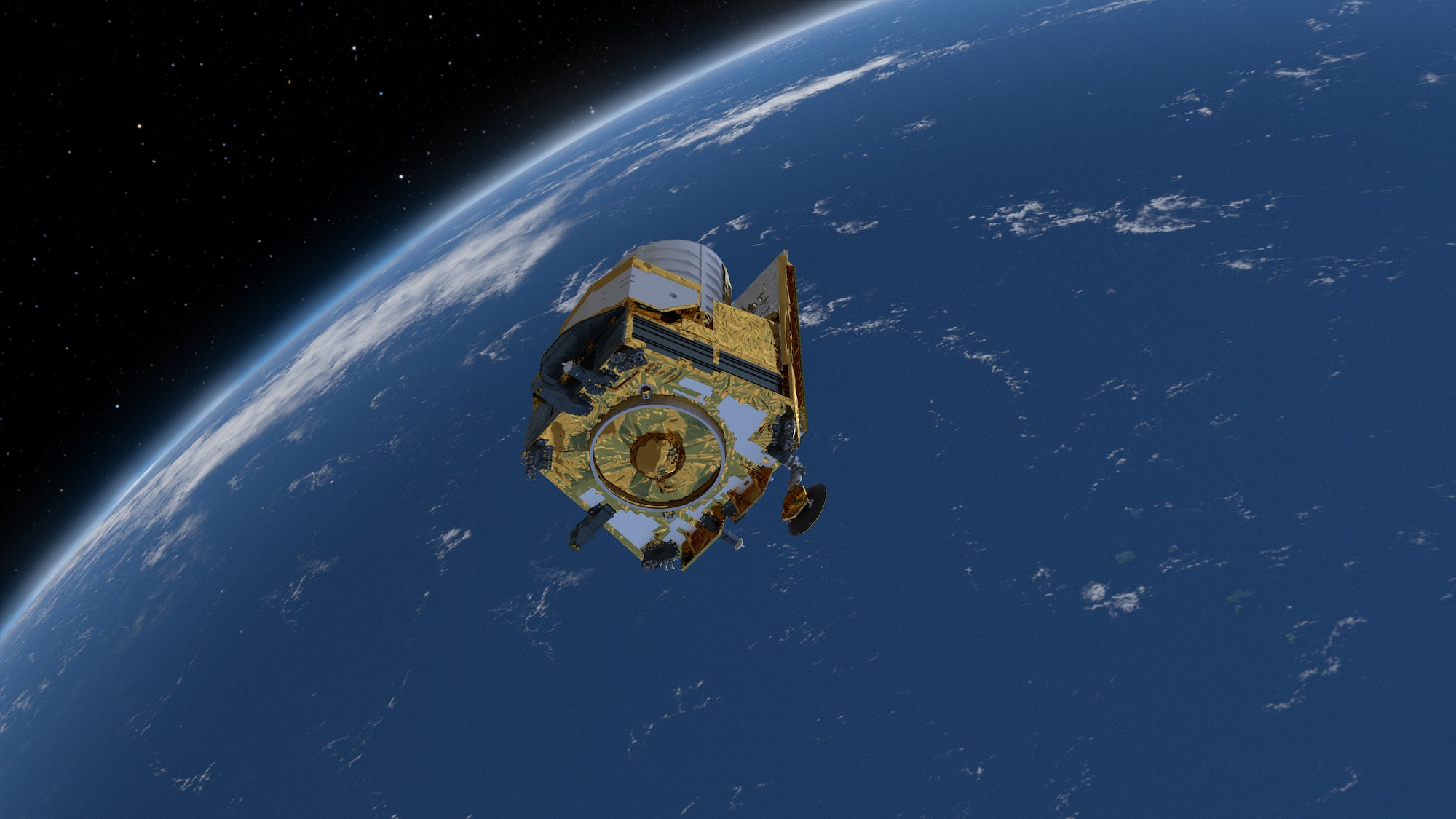
The universe’s expansion is speeding up, and astrophysicists want to know why.
On July 1st, the European Space Agency (ESA) is set to launch a new space telescope, Euclid. With contributions from NASA, the mission will seek to understand the unknown cause for the accelerating expansion, called dark energy, and its effects on the evolution of our universe.
The Euclid spacecraft measures about 14.5 feet (4.4 meters) long, or about the average size of a canoe, and houses a 1.2-meter telescope. It will catch a ride to space aboard Space X’s Falcon 9 rocket from Cape Canaveral, Florida.
Euclid’s launch will be live-streamed on ESA’s YouTube page and ESA’s Web TV.
Getting ready
After launch, Euclid will follow a course to its final orbital location, the Sun-Earth Lagrange point L2. (This is also where the James Webb Space Telescope orbits.) It will take Euclid about four weeks to get to L2, which is located about 930,000 miles (1.5 million kilometers) from Earth, where the craft will face away from the Sun.
Once in orbit, mission operators will turn on and verify that Euclid’s two instruments are functioning. Euclid’s team will calibrate the telescope and prepare it for observations one to three months after launch.
The mission will create the universe’s largest and most accurate 3D map by observing billions of galaxies out to a distance of 10 billion light-years. In total, Euclid will survey more than a third of the sky. With these observations, scientists will piece together how and large-scale structures of the universe have expanded over time. The mission also aims to uncover more about gravity’s role in the universe and the behavior of dark energy and dark matter.
The dark universe
Since its birth, the universe has been expanding. After discovering this fact, researchers at first thought that the gravity of matter strewn throughout space would ultimately slow the expansion. Instead, after observing supernovae in the 1990s with the Hubble Space Telescope, astronomers found that about six to eight billion years ago, the universe’s expansion began accelerating, although no one understands why.
The phenomenon driving the acceleration is called dark energy, which is different from dark matter. About 68 percent of the universe is made of this dark energy. Euclid will look for the influence of dark energy or changes in gravity’s influence throughout the universe over time by observing how galaxies have clustered together during different cosmic eras in its history.
Dark matter, on the other hand, is composed of particles and is estimated to make up 27 percent of the total contents of the universe. Dark matter is invisible, making it difficult to detect. But like normal matter, dark matter has mass and gravity, an attractive force. So, astronomers can observe it indirectly, such as when galaxy clusters warp the light of objects behind them, called gravitational lensing. Because all the visible matter seen in galaxy clusters is insufficient to create the exact warping effects observed, researchers believe dark matter provides the added gravity for the distortions. So, Euclid will study the accumulation of dark matter throughout the universe using gravitational lensing.
Two telescopes
Euclid isn’t the only telescope aiming to answer vital questions about our universe’s history and future. NASA will launch the Nancy Grace Roman Space Telescope by May 2027, which will team up with Euclid to study cosmic acceleration.
“Twenty-five years after its discovery, the universe’s accelerated expansion remains one of the most pressing mysteries in astrophysics,” said Jason Rhodes, a senior research scientist at NASA’s Jet Propulsion Laboratory and deputy project scientist for Roman and the U.S. science lead for Euclid, in a statement. “With these upcoming telescopes, we will measure dark energy in different ways and with far more precision than previously achievable, opening up a new era of exploration into this mystery.”









